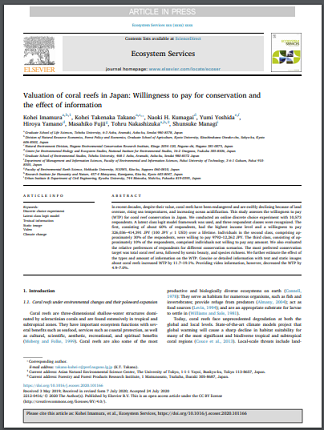
In recent decades, despite their value, coral reefs have been endangered and are swiftly declining because of land overuse, rising sea temperatures, and increasing ocean acidification. This study assesses the willingness to pay (WTP) for coral reef conservation in Japan. We conducted an online discrete choice experiment with 10,573 respondents. A latent class logit model framework was used, and three respondent classes were recognized. The first, consisting of about 60% of respondents, had the highest income level and a willingness to pay 326,036–414,391 JPY (100 JPY ≓ 1 USD) over a lifetime. Individuals in the second class, comprising approximately 30% of the respondents, were willing to pay 9792–12,262 JPY. The third class, consisting of approximately 10% of the respondents, comprised individuals not willing to pay any amount. We also evaluated the relative preferences of respondents for different conservation scenarios. The most preferred conservation target was total coral reef area, followed by scenic beauty, and species richness. We further estimate the effect of the types and amount of information on the WTP. Concise or detailed information with text and static images about coral reefs increased WTP by 11.7–19.1%. Providing video information, however, decreased the WTP by 4.9–7.0%.







